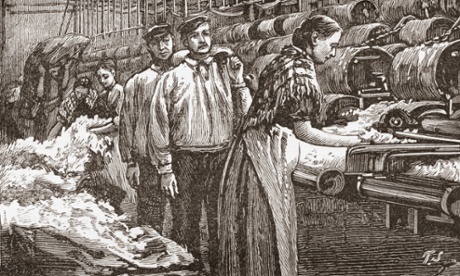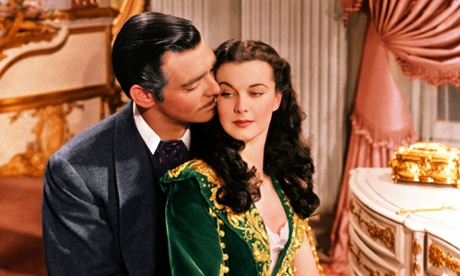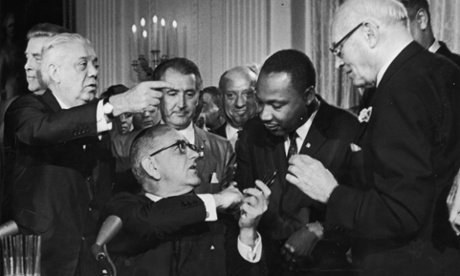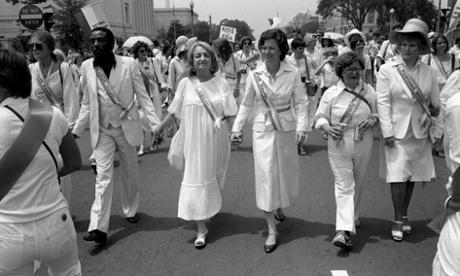Many modern women in the US and Europe never question their right to open a bank account, own property, or even buy wine or beer in a pub. These rights, however, were hard won: for much of history, and even up to 40 years ago, middle-class women were not allowed to handle money; even having a job was seen as a sign of financial desperation. In the lastest addition to our Money and Feminism series, we trace the modern history of women and money.
Ancient Egypt, 3100 BCE and after: Women hold equal financial rights with men. As scholar Janet Johnson writes, “Egyptian women were able to acquire, to own, and to dispose of property (both real and personal) in their own name. They could enter into contracts in their own name; they could initiate civil court cases and could, likewise, be sued; they could serve as witnesses in court cases; they could serve on juries; and they could witness legal documents.” Women don’t always exercise these rights, Johnson says, because of social factors.
Biblical era, 1800BC and after): Under Jewish law, women have the right to own property and sue others in court without a man representing them. Wives can’t inherit directly from their husbands – unless it is a gift or they have no children – but daughters can inherit if they don’t have brothers. The Book of Numbers, the fourth book of the Hebrew Bible, lays down an early law of personal finance: “If a man die, and have no son, then ye shall cause his inheritance to pass unto his daughter.” Sons who inherit are expected to use the estate to support the women in the family.
Ancient Hinduism, 1500BC and after: Women have the right to control stridhan, or property before marriage, which includes gifts from parents, friends and strangers as well as earnings from her own work. Divorce is not allowed and inheritance laws favor male family members.
Ancient Greece: Women’s financial rights are constrained compared to earlier societies. Women are not allowed to inherit property or take a case to court unless a male guardian is in charge. Women can, however, trade and engage in industry, such as tavern-keeping, although work in the classical watering hole is reserved for the lower classes.
Ancient Rome: The pendulum swings back as freeborn Roman women are allowed to divorce, own property and inherit. Divorce is easy to get – presaging the Christian opposition to splitting up marriages – but the husband has the legal right to keep the children.

Byzantine Empire, AD565: The Justinian laws – named for the emperor, known as “the last Roman”, who created a template for modern western civil law – allow women to be married without a dowry. Some working women, including prostitutes and tavern-workers, do not have the right to marry Roman citizens and can only be kept by Roman men as concubines. If a woman cheats on her husband, he can divorce her and “keep the pre-nuptial gift, the dowry and one third of any other property she possessed”. Justinian’s wife, the Empress Theodora, a former actress and wool-spinner, left her jobs when the emperor courted her. She is widely credited with influencing him to expand property and divorce rights for women.
The Middle East, AD600s: Islam is founded in Arabia and allows womenthe right to inherit estates, own property and initiate divorce. As in Jewish law, when a parent dies the eldest son receives a double share of the inheritance. Men can inherit half their wives’ estates, unless they have a child, in which case men only get 25% of the estate.
Europe, 800s: Anglo-Saxon laws allow women to own their own property, before and after marriage. In Norse societies, women are also allowed to conduct business as equals with men.
England, 1100s: English common law, a combination of Anglo-Saxon and Norman traditions, leads to the creation of coverture, which is the belief that married men and women are one financial entity. As such, married women cannot own property, run taverns or stores or sue in court. Those financial rights could be enjoyed, however, by widows and spinsters. Over time, coverture is corrupted into the view that women are property of their husbands.
Americas, 1718: In Pennsylvania, women are able to own and manage property – if their husbands are incapacitated.
Russia, 1753: Russian women are granted the right to what’s known as a “separate economy”: the ability to earn their own income and retain it for her own use, independent of her husband. That meant he couldn’t demand that she turn it over to him to drink or gamble with, or, say, to support a mistress. A little over a decade later, Catherine the Great establishes the first state-financed institution of higher education for women, the Smolny Institute in St Petersburg.
Americas, 1771: New York becomes the first US state to require a woman’s consent if her husband tries to sell property that she brought to a marriage. The act also required the judge to meet privately with the woman to reassure himself that the signature wasn’t forged or her consent coerced.
France, 1791: Revolutionary France gives women equal inheritance rights (although they lose them later, when the monarchy is restored).

US, 1839: Mississippi allows women to own property in their own names. It is the first state to do so.
US, 1844: Married women in Maine become the first in the US to win the right to “separate economy”.
US, 1845: Women gain the right to file patents in New York.
US, 1848: Married Woman’s Property Act is passed in New York. It is later used as a model for other states, all of which pass their own versions by 1900. For the first time, a woman wasn’t automatically liable for her husband’s debts; she could enter contracts on her own; she could collect rents or receive an inheritance in her own right; she could file a lawsuit on her own behalf. She became for economic purposes, an individual, as if she were still single.
Iceland, 1850: Iceland becomes first country to institute unconditional equal inheritance rights.

US, 1862: The US Homestead Act makes it easier for single, widowed and divorced women to claim land in their own names.
In the same year, the California passed a law that established a state savings and loan industry that also guaranteed that a woman who made deposits in her own name was entitled to keep control of the money. The state recognized the full financial independence of women – and in 1862 the San Francisco Savings Union approved a loan to a woman.
UK, 1870: UK passes the Married Women’s Property Act.
US, 1872: Illinois grants freedom of occupational choice to both men and women. But when Myra Colby Bradwell, who studied as her husband’s law apprentice to pass the Illinois bar, tries to practice as a lawyer, the US supreme court rules in 1873 that the state doesn’t have to grant a law license to a married woman.
US, 1880: Mary Gage opens a stock exchange for women who want to use their own money to speculate on railroad stocks. Meanwhile, notorious cheapskate Hetty Green, aka “the Witch of Wall Street”, is consolidating her own fortune.
France, 1881: France grants women the right to own bank accounts; five years later, the right is extended to married women, who are allowed to open accounts without their husbands’ permission. The US does not follow suit until the 196os, and the UK lags until 1975.

US, 1908: Oregon limits the workday for women to 10 hours – with the implication that women are too fragile to work much longer than that, or they are needed at home.
US, 1919: First Women’s Bank of Tennessee (Clarksville) opens to cater to women customers only. While the bank employees and directors were women, its shareholders were male.
US, 1921: Alice Mary Robertson of Oklahoma becomes the second woman in Congress, running on an anti-feminist platform including an opposition to women’s right to vote and education on maternity and childcare. She saves special scorn for the League of Women Voters “or any other organization that will be used as a club against men” and says “I came to Congress to represent my district, not women.” Showing that having and getting money are crucial for all women, even in politics, she loses her seat for not appropriating enough cash for her district. She serves for two years before being voted out of office.
UK and US, 1922: The UK finally allows equal inheritance.
In the US, suffragette and activist Rebecca Felton, of Georgia, becomes the first woman to become a US senator. At 87-years-old, she serves for one day. She calls out southern men for an excess of chivalry and too little concern for women’s rights, writing, “honeyed phrases are pleasant to listen to, but the sensible women of our country would prefer more substantial gifts.”

US, 1924: Wyoming elects the nation’s first female governor, Nellie Tayloe Ross.
US, 1938: The federal minimum wage is born with the Fair Labor Standards Act, wiping out common pay differences between men and women for hourly jobs.
UK, 1956: Civil service reforms in UK give men and women who are teachers and have other government jobs the right to equal pay.
India, 1961: India bans dowries for women before marriage and allows women to sue if her husband’s family harass her for the money. The anti-dowry law goes largely ignored.
US, 1963: The US passes the first legislation requiring equal pay for equal work, but it would need to be expanded in 1972 to salespeople, executives, administrators, etc.

US, 1967: Lyndon B Johnson’s 1965 affirmative action benefits are expanded to cover women.
US and UK, 1968: It becomes illegal to place help wanted ads specifying gender in the US; in the UK, a strike leads to the 1970 Equal Pay Act.
US, 1969: Colgate-Palmolive lays women off from their jobs rather than put them in physical work, “to protect our ladies”. In Bowe v Colgate-Palmolive, an appeals court rules physical labor cannot be limited to men.
US, 1970: Schultz v Wheaton Glass: a federal appeals court decision makes it illegal for a company to change a job’s title so that they could pay women who held the position less than male workers.
US, 1972: Katharine Graham, scion of the company that owns the Washington Post, becomes the first woman to become CEO of a Fortune 500 company.

1974: Equal Credit Opportunity Act passes in the US. Until then, banks required single, widowed or divorced women to bring a man along to cosign any credit application, regardless of their income. They would also discount the value of those wages when considering how much credit to grant, by as much as 50%.
US, 1975: The first woman-owned commercial bank opens in New York City – First Women’s Bank, at which Betty Friedan had an account.
Ireland, 1976: Irish women are finally able to own their own homes outright.
US, 1978: The Pregnancy Discrimination Act is passed in the US. Until the law was put into effect, women could still legally be dismissed from their jobs for becoming pregnant.
US, 1980: Sexual harassment is first defined by the Equal Employment Opportunity Commission, although a court had heard the first case in 1977.
US, 1981: The last vestiges of a husband being able to keep a wife in the dark (at least legally) vanish, thanks to Kirchberg v Feenstra. A husband is told he doesn’t have the right to unilaterally take out a second mortgage on property held jointly with his wife.

UK, 1982: Women are allowed to spend their money in English pubs without being refused service.
France, 1983: France requires companies with more than 50 employees to carry out comparative salary surveys.
Japan, 1985: Japan passes an equal employment opportunity law, although the lack of penalties draws criticism.
UK, 1986: The UK enables women to retire at the same age as men (and take well-compensated factory night shifts)
US, 1993: The Family and Medical Leave Act becomes law in the US.
US, 2007: The supreme court rules in Ledbetter v Goodyear that women have to sue for discriminatory pay as soon as it occurs and can’t bring a lawsuit for pay discrimination if more than 180 days have passed. The case was based on Lilly Ledbetter’s career at Goodyear, where after decades of work, her pay as a supervisor was lower than the lowest-paid man of comparable seniority.
Norway, 2008: Norway requires companies to ensure that 40% of its board members are women.
US, 2009: President Barack Obama signs the Lilly Ledbetter Fair Pay Restoration act, which allows people to sue companies for pay discrimination even if more than six months have passed.

US and India, 2013: The National Women’s Law Center publishes a critical progress report about the wage gap between men and women titled “50 Years and Counting: The Unfinished Business of Achieving Fair Pay”.
In India, statistics suggest that, on average, one woman is killed every hour in a dispute over a dowry.
US, 2014: Nearly two-thirds of minimum-wage workers are women and the movement to raise the wage sweeps the country. In a success for the US “Fight for 15” movement, Seattle raises its minimum wage to $15, and several other cities and states raise their minimum wage ceilings too – but many still lag, and the federal minimum wage is still at $7.25 an hour, or a poverty-level wage. Minimum-wage bills languish in both the House and Senate.
Sources and further reading are linked where applicable.
Source: http://www.theguardian.com/money/us-money-blog/2014/aug/11/women-rights-money-timeline-history

No comments:
Post a Comment